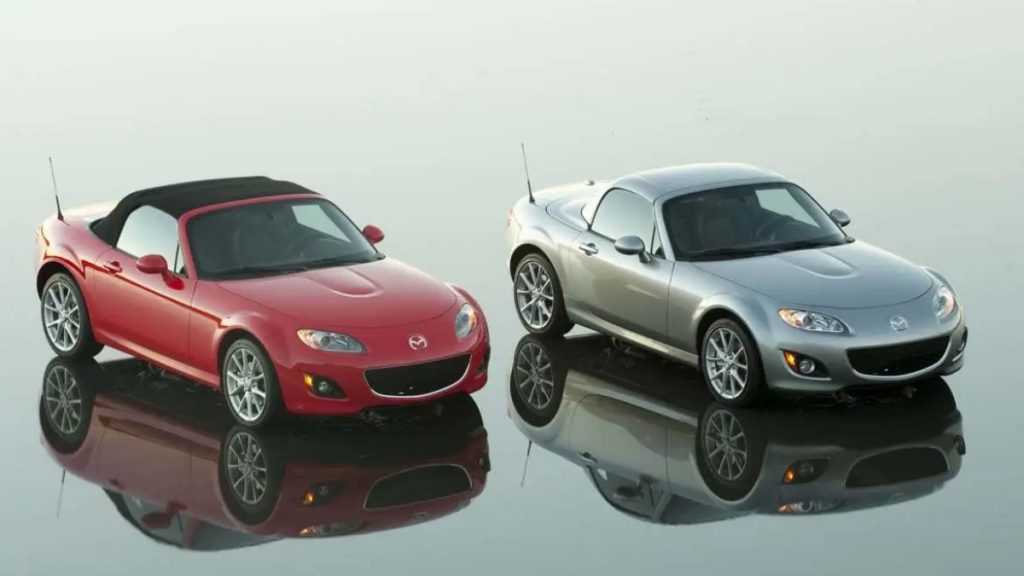The Mazda MX-5, also known as the Miata in some regions, is a symbol of the joy of driving. Since its debut in 1989, it has become one of the world’s best-selling roadsters, known for its lightweight design, nimble handling, and affordability. Over the years, the MX-5 has evolved into a beloved classic, earning a dedicated following of car enthusiasts and collectors. This article will take you through the journey of the Mazda MX-5, highlighting its key design changes, technological advancements, and the factors that have kept it relevant for over three decades.
The Birth of the MX-5: A Dream Realized
The origins of the Mazda MX-5 can be traced back to the mid-1980s when the company’s engineers and designers set out to create a car that would capture the spirit of classic roadsters from the 1950s and 1960s, like the Lotus Elan. The vision was simple: build a lightweight, affordable, and fun-to-drive convertible that would appeal to a broad range of driving enthusiasts. In 1989, the first-generation MX-5 (NA) was introduced to the world at the Chicago Auto Show.
The NA MX-5 featured a simple, no-frills design that focused on the driving experience. Weighing in at just over 2,000 pounds, it was a car that felt light and agile on the road. Under the hood, the car was powered by a 1.6-liter inline-four engine, capable of producing 115 horsepower. This may seem modest by today’s standards, but the car’s lightweight construction and perfectly balanced chassis made it a joy to drive. The first MX-5 was available in two versions: the base model and the sportier RS model, which included limited-slip differentials and sportier suspension settings.
The Evolution of the MX-5: Second and Third Generations
The success of the original MX-5 quickly led to the development of its successor. In 1998, the second-generation MX-5 (NB) was introduced. While maintaining the core philosophy of the original, the NB featured more modern styling, a slightly larger body, and improved safety features. The engine choices were expanded, and the car gained the option of a 1.8-liter engine, which increased performance to around 140 horsepower.
In 2005, Mazda unveiled the third-generation MX-5 (NC). This version marked a shift in design philosophy, as the car grew slightly in size and became more refined. Despite the increased dimensions, the NC remained true to the original’s lightweight principles, with the car weighing just over 2,300 pounds. The third generation also featured a more modern interior, with an emphasis on comfort and technology. Under the hood, the 1.8-liter engine was retained, but it was paired with a more sophisticated six-speed transmission, making for an even more engaging driving experience.
Throughout these generations, the MX-5 remained true to its core values of affordability, driving pleasure, and simplicity. However, the car’s evolution was not just about improving performance and safety; it also marked a shift towards broader market appeal, with an increasing number of drivers falling in love with its timeless design.
The Fourth Generation: A Return to Roots
In 2015, Mazda unveiled the fourth-generation MX-5 (ND), a car that returned to the roots of the original 1989 model. The ND was smaller and lighter than its predecessor, thanks to the introduction of the new “Skyactiv” technology, which focused on reducing weight while improving fuel efficiency and performance. The car’s exterior design was a nod to the classic roadster aesthetic, with sleek lines and a compact, aggressive stance.
Under the hood, the ND featured a 2.0-liter engine, delivering around 155 horsepower. While this might not sound like much in a world of turbocharged engines, the ND’s low weight and agile handling made it an exhilarating experience behind the wheel. The ND was also the first MX-5 to offer advanced safety features, including lane-departure warning and automatic emergency braking, making it more suitable for modern drivers.
The 35th Anniversary Edition: A Milestone Celebration
In 2024, Mazda introduced the 35th Anniversary Edition MX-5 to celebrate the iconic roadster’s enduring legacy. This limited-edition model brings a host of unique features, including special exterior paint colors, a commemorative interior, and exclusive badging. The 35th Anniversary Edition MX-5 is a nod to the car’s rich history, offering fans a chance to own a piece of automotive heritage. Many owners take pride in customizing their MX-5s with accessories, and a place like MX5 Parts offers a wide range of options to enhance performance and styling, helping to keep the spirit of the car alive for years to come.
The Legacy of the MX-5
Throughout its evolution, the Mazda MX-5 has remained an automotive icon. Its success is not only due to its lightweight design, reliability, and affordability but also because of its ability to remain relevant in a world of rapidly changing automotive trends. From the original NA model to the latest 35th Anniversary Edition, the MX-5 continues to attract new generations of drivers who appreciate its purity of design and the simple joy of driving.
For many, the MX-5 is more than just a car—it’s a symbol of driving freedom. Whether it’s a weekend drive through the countryside or a spirited track day, the MX-5 remains one of the most rewarding vehicles to drive. As the MX-5 continues to evolve, one thing remains certain: it will always be a car that delivers the purest form of driving enjoyment.




